11 Tips for How to Surf in Cold Water (AND Enjoy it!)
Surfing in cold water is a very different experience to the tropical beach scenes that many people think of when they picture surfers riding waves.
Although it is not as easy as paddling out at a tropical beach in boardshorts, surfing in cold water can be a very rewarding experience if you know how to do it properly.
As I live somewhere where the water drops to around 44 degrees (6 degrees celsius) each year, I know all too well how it can be trying to surf out in the coldest months of the year, just to get a few waves!
So, here are my 11 tips for how to surf in cold water:
- Go fully rubbered up!
- Layer up under your wetsuit
- Research or regret
- Warm up like crazy
- Wax, wax and more wax
- Use a bigger board
- Avoid freezing up when changing
- Lower your expectations
- Train extra hard to prepare
- Always wear ear plugs
- Take a Thermos for quick thawing
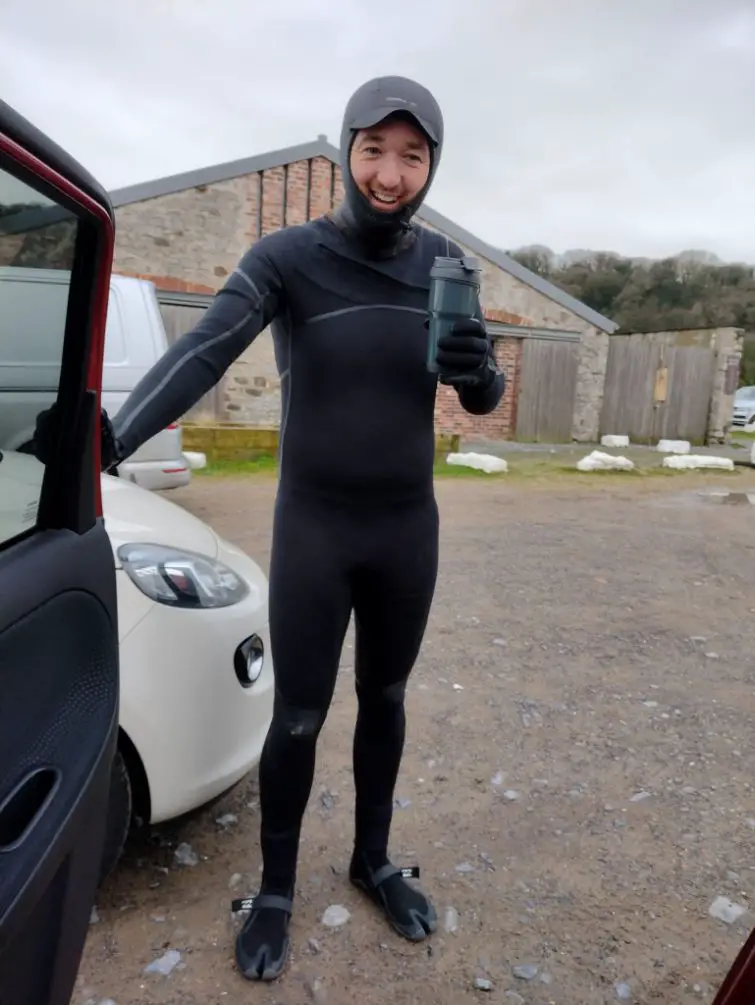
Go Fully Rubbered Up
When heading out to surf in cold water, the first thing that you will really notice are any parts of your body that are exposed to the cold water.
Your extremities, like hands, feet, head and face will all immediately start to feel like they are stinging or burning if you put them into cold water without proper protection.
Depending on how extreme the cold is, you might need wetsuit boots, gloves and a hood to keep you from freezing up entirely.
Generally speaking, the order in which you will need to add each of these items as it gets colder is as follows:
- Wetsuit boots
- Wetsuit gloves
- Hood
The problem is that, if you don’t wear these extras when surfing in cold water, you will lose feeling in these parts of your body, so it’s always best to go over protected in case you are unsure.
That said, it is still possible to feel too hot and uncomfortable even in cold water but you can still then return to the beach and take off the items that you don’t need.
Generally speaking, you will want to start wearing wetsuit boots when the water temperature is below 58 degrees Fahrenheit (14 degrees Celsius). You can add on extras every few degrees below that.

Layer up under your wetsuit
One of the best ways of staying warm when trying to surf in cold water is to add all the extra thermal layers that you can under your wetsuit.
Thermal rash guards and shorts are both strongly recommended here. My advice would be to go for thermal items that have the most advanced thermal properties, rather than thicker ones. In the past, I used to use use fleece lined rash guards as they felt like they would be warmer, but the problem was that they added thickness and therefore restricted my movement by making my wetsuit feel tighter.
As a tip, you might find that going for a thermal top without sleeves can actually keep you warm without restricting your paddling movement. This is what I have and have found it to be great to keep me from getting cold while also letting me paddle pretty well.
If you want to prevent the horrible feeling of ice cold water flushing down the back of your wetsuit, you can use a thermal rash guard with hood.
This means that the hood will be connected from inside your wetsuit preventing any of your neck being exposed to the cold water. If any water does go down the back of your wetsuit when duckdiving, the feeling will be a lot less intense since it will always be on the outside of your thermal layer, rather than directly on your skin without this hood connection.
Research or Regret!
Specifically, I mean that you should research the water temperature in your chosen cold water surfing area before venturing out into the waves.
This is because wetsuits come in a huge range of different thicknesses, so if you want to get this right, you will need to use the right suit. Going for too thick a wetsuit will make you overheat quite quickly, so be sure to get it right.
Of all the wetsuits listed below, a 5/4mm wetsuit is a safe bet for colder water as you can go into pretty cold water if you use thermals and all the other accessories like boots, gloves and a hood with it. A 4/3mm wetsuit is also extremely versatile, although the thinner wetsuit means that it is obviously for slightly warmer water.
As a general guide to surf wetsuits for colder water, here are some temperature ranges for different wetsuit thickness:
| Water Temperature | Wetsuit Thickness (mm) |
| 55-60° | 3/2 mm full wetsuit (Boots optional) |
| 50-55° | 4/3mm full wetsuit with boots |
| 45-50° | 5/4mm full wetsuit with boots, gloves and a hood |
| <45° | 6/5mm full wetsuit with boots, gloves, hood and thermals |
Warm up like crazy
Since you won’t be getting much warmth from the sea when paddling out in cold water, you should warm up like crazy while still on land!
Try to get your blood pumping and do a few minutes until you feel that you are close to breaking a sweat (which might not be that hard in a thick wetsuit on dry land!)
This warmth will allow you to remain supple and flexible and will prepare your muscles for the intense workout that they are about to get. It will also take the edge off the cold water as your heightened body temperature should be ready
When you jump into cold water for a surf, your body temperature will go down, so it’s helpful to start it a higher temperature to account for the drop in temperature at the start.
If you don’t do this, and trust me I’ve been there, you can sometimes start freezing up at the beginning and not recover from it during your cold water surf session.
Surf Warm-up for Cold Water
I have used the Surf Strength Coach’s warm up a few times and have found it pretty good. Although I don’t do all of it at the beach, it’s good to get a good idea of the kind of things you can do.
I also use the AthleanX channel over on YouTube as a guide for fitness in the wider sense. One thing the presenter of AthleanX, Jeff Cavaliere, recommends is to do some kind of intense workout for about 5 minutes or until warmed up, for example:
- 30 seconds of a boxer’s shuffle
- 30 seconds of start jumps
- 30 seconds of high knees
Repeat these until you feel warm or get close to 5 minutes and your body should be primed for the cold water surfing!
Wax, wax and more wax
Before trying to surf in cold water, you will need a good coat of wax on your surfboard. In general, you will need a lot more surf wax in colder water than you would do in warmer water.
Make sure you go extra heavy on the wax as it is so much easier for you to slip off your board in cold water.
This comes back to the ingredients in cold water wax, making it harder and more likely to feel slick under your feet.
You can use a wax comb/scraper as well to keep your traction on the board.
This is mainly for when you are paddling or lying down on your board. I say this because you might find that, once up and riding, your wetsuit boots offer a bit of added traction and grip, which is a very nice bonus, but won’t help you when paddling!
Use a bigger board
As you will be wearing a heck of a lot more rubber in your cold water surf sessions, this will also add to the weight you are carrying.
This will then make your board sink that little bit more into the water.
To allow for this in the cold surf, try using a slightly bigger board by volume than you would in warmer water.
This extra volume will allow for the extra weight and prevent you from getting frustrated when trying to catch waves in vain.
Keep a record of the volume of the different surfboards that you use and the water temperature, as well as the wetsuit gear and accessories that you wear to go with them. This should help you to identify just how much bigger a surfboard works for you in cold water.
Train extra hard to prepare
When you are considering how to surf in cold water, you should also consider that fact that it is going to be a harder workout than surfing in boardshorts.
With all your accessories, you will be carrying a heck of a lot more weight and so you will need to prepare physically for that.
Once your wetsuit gets wet, it will also take on the weight of the water that it soaks up, further adding to the weight and making it quite a lot heavier than the dry weight before you get in the sea.
To give you an example, I weighed all my winter surf wetsuit gear after a session and it weighed 11 pounds (5kg) on its own!
That was including things like thermal rash guards, booties, gloves and a hood, as well as a 5mm thick wetsuit.
If you think about all that extra for the duration of a session, you are going to need to prepare for that physically and training harder is the best way to do it.
You can do resistance training to help you surf in cold water. This can be done in many ways and again I’m including a video from AthleanX below to give you some suggestions.
You can also try training with a weighted vest (never in the sea of course!) to simulate adding this extra weight to your body when surfing.
Avoid freezing up when changing
You can get ice cold when changing before a surf in frigid waters. As we have looked at above, getting your body warmed up can counteract this, but preventing it when getting changed will also be a big help.
To do this, get yourself a changing poncho/robe specifically for surfing and watersports since these are designed to keep you warm and save your dignity – win-win!
The poncho design allows you to move your arms and hands and gives you the freedom to change your clothes underneath. This crucially keeps some of your core temperature and stops your skin from being fully exposed to the cold air and wind.
Remember that getting changed in this way after a session can really help you to warm back up and feel good sooner, so don’t overlook that side of things either!
Lower your expectations
One of the big issues with cold-water surfing is that you might expect yourself to perform like you would in the warmer temperatures.
Unfortunately, with the extra neoprene and wetsuit accessories you’ve covered in, this is going to be difficult, so remember this when you paddle out and adjust your expectations for the session and your own performance.
The main difference for cold water surfing can be summed up in two ways: it’s harder to do perform maneuvers and you will not last as long in the surf.
Maneuvers
You will find it harder to do maneuvers in cold water as your body will be less supple from the thick wetsuit and extra neoprene
As such, try not to paddle out thinking that you’re going to try new tricks or airs on the coldest days of the year. Instead, think of it as good training to keep your surfing flowing for when the warmer weather comes again.
Of course, there are plenty of clips of pro surfers doing all kinds of crazy surfing in places like Iceland in extreme temperatures, but remember that they are professionals for a reason! Even the pros would probably agree that their level is lower in cold water, so don’t feel bad about it.
Session Length
To go with the point above, you will probably not last as long in the surf as you would in warmer waters.
I would say to expect a cold-water surf session to last about 30% less time than the average time you would stay out in the surf in warmer weather.
This means that you might want to aim to hit the surf at the exact right time of the tide since paddling out early and freezing up quickly isn’t what you want to happen!
Always wear ear plugs
This one might sound strange but it is a slow burner and you will thank me for it later.
Surfing in cold water without ear plugs will damage your ears over time, so it’s best to start off by wearing them.
Again, this is something that I’ve been through personally. I have what is called “surfer’s ear” (or exostosis) from years of surfing in cold water.
Any water entering your ears causes a shock to your system, and your body responds by gradually trying to block this water coming in to avoid damage to your ear canal.
The response comes in the form of bony growths in your ears which gradually make your ear canal smaller; this process can be painful and cause hearing problems and even lead to surgery.
The point about cold water here is that it causes a more intense shock to your system, so the growths in your ears will happen faster if you regularly surf in cold water.
Although this response takes years, you will only know it when you have it and then it will be too late.
By wearing ear plugs, you can prevent this almost altogether and not have to worry about it at all. Again, speaking from personal experience as someone who didn’t know this when I started, I wish I had put ear plugs in from day one of surfing in cold water!
Take a Thermos for quick thawing
This tips is to avoid the post-surf icing up, as parts of your body can quickly start to lock up after getting out of the cold surf.
One of the worst parts of this is the dread ‘claw’ hands that many surfers get after a cold water session, and something I’ve had hundreds of times over the years.
This basically makes your hands almost useless as they recover from the cold and claw up with your fingers curling inwards.
It makes it hard to put on your pants, and frankly dangerous to try and drive a car.
So, to get over this quickly, take a good Thermos flask of warm water with you. Make sure this isn’t boiling hot, or at least dilute it with cooler water if needed.
You can then pour this on your hands to get going that much faster and avoid the issues above of the dreaded claw hands that have plagued so many cold-water surfers in the past!
Related Questions
How cold is too cold for surfing? 35.6°F (2°C) water temperature is probably as cold as you can surf in. People surf in Iceland all-year round where it reaches this temperature in winter every year. The problem is that you can find floating ice blocks in the sea so it becomes very difficult at this point or lower.
The sea can also start to freeze at a few degrees colder than this, so don’t expect to be able to go much further.
The main problem that people have when surfing in cold water like this is the extremely thick wetsuits combined with a short session time. A 6mm thickness wetsuit is a necessity, plus all the other accessories at a similar thickness, but this is hard to get in and out of and. Despite how good these wetsuits are these days, surfers will still find it hard to last much more than 90 minutes in the water in an extremely cold surfing environment.
How do you warm up a wetsuit? Pour some warm (but not boiling!) water on the inside of your wetsuit if it feels particularly cold. This can take the edge off getting into it on a cold day and can make the feeling a lot more bearable. However, going too hot here can ruin your suit so take care!
This trick obviously makes the wetsuit feel wet, so you may have to sacrifice a dry wetsuit for this, which is not great but the only option.
Truth be told, most surfers happily pee in their wetsuit once out in the surf. This definitely gives it a warm feeling but is obviously only for those who don’t mind it! The problem is that, when surfing for hours on end, and combined with the cold water, the chances of needing a pee during a surf session are high, so if you can get over this fact, peeing in your suit can warm things up quickly!
If you do end up taking this ‘natural’ suit warming approach, be sure to wash your wetsuit out with water and a little baby shampoo afterwards. This is because the pee will leave a pungent smell in your wetsuit for a long time afterwards so it is best washed properly to get rid of the smell. Make sure to do the same for any wetsuit boots as these will collect much of the water when you get out of the surf. This makes them prone to have a long-lasting ammonia smell since they don’t dry out as well as a wetsuit given their enclosed design and dampness. So, peeing in your suit is one way to warm things up, but you have been warned that it does come with its own consequences!
Given that wetsuits are made from many kinds of synthetic materials, never try to warm up your suit using electronic products or machines like a tumble dryer. This will not only void the warranty on the suit but will mean far fewer years of use out of it.
As an impatient teenager, I foolishly did this once on a very cold winter’s day. The wetsuit did feel warm to the touch but, unsurprisingly, it didn’t last me more than 2 years! Take it from me, it is a bad bad idea!
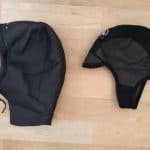


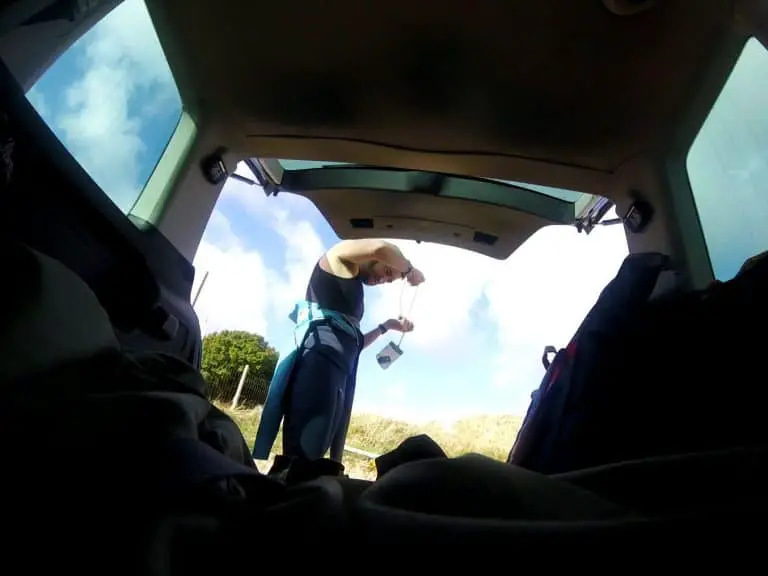
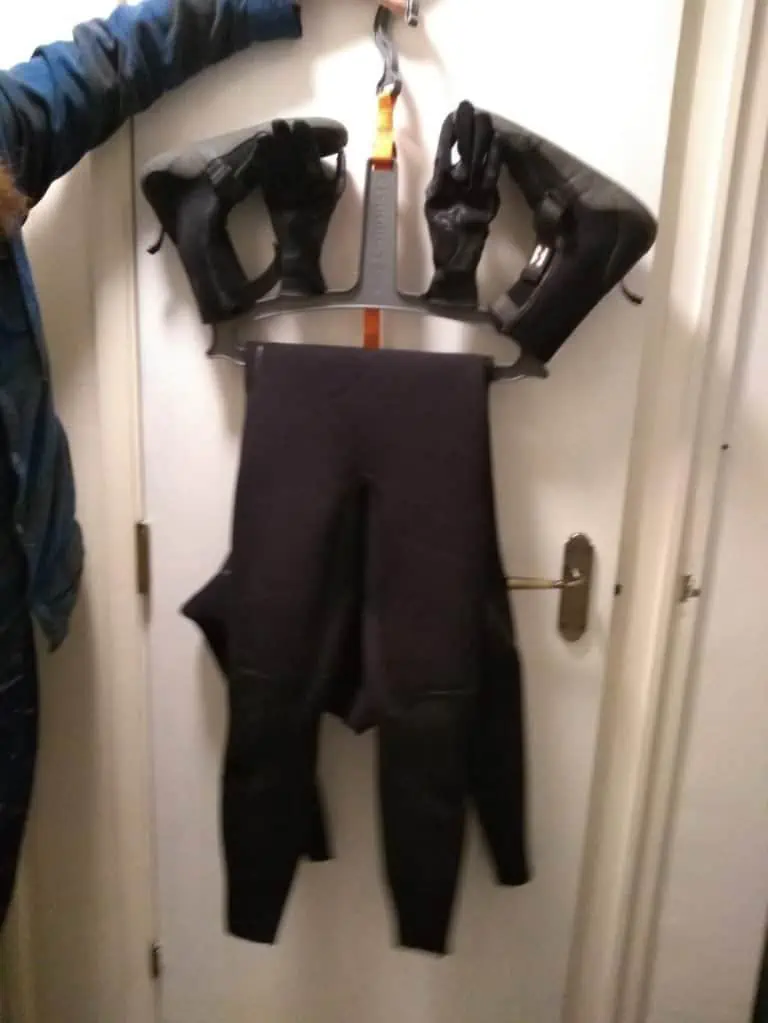
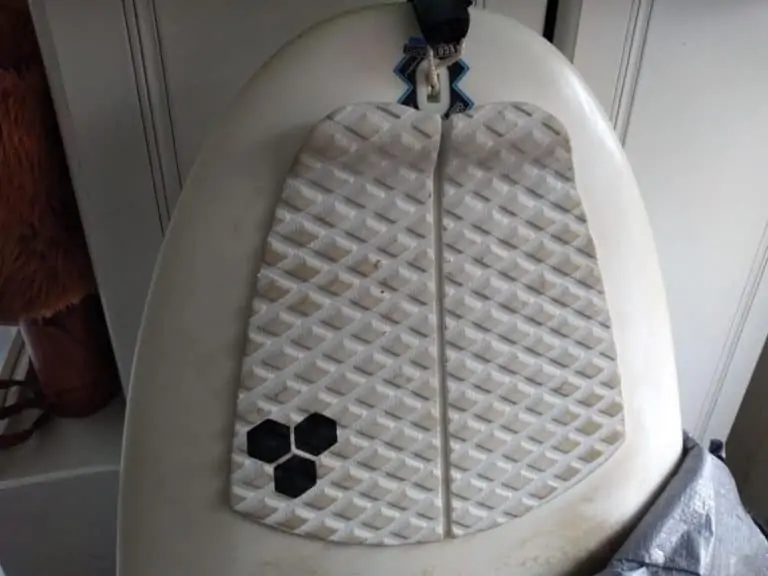
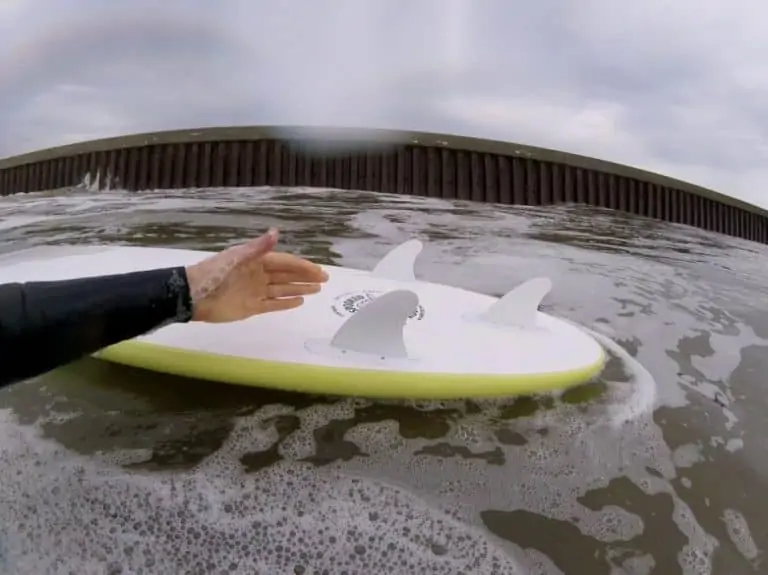
One Comment
Comments are closed.